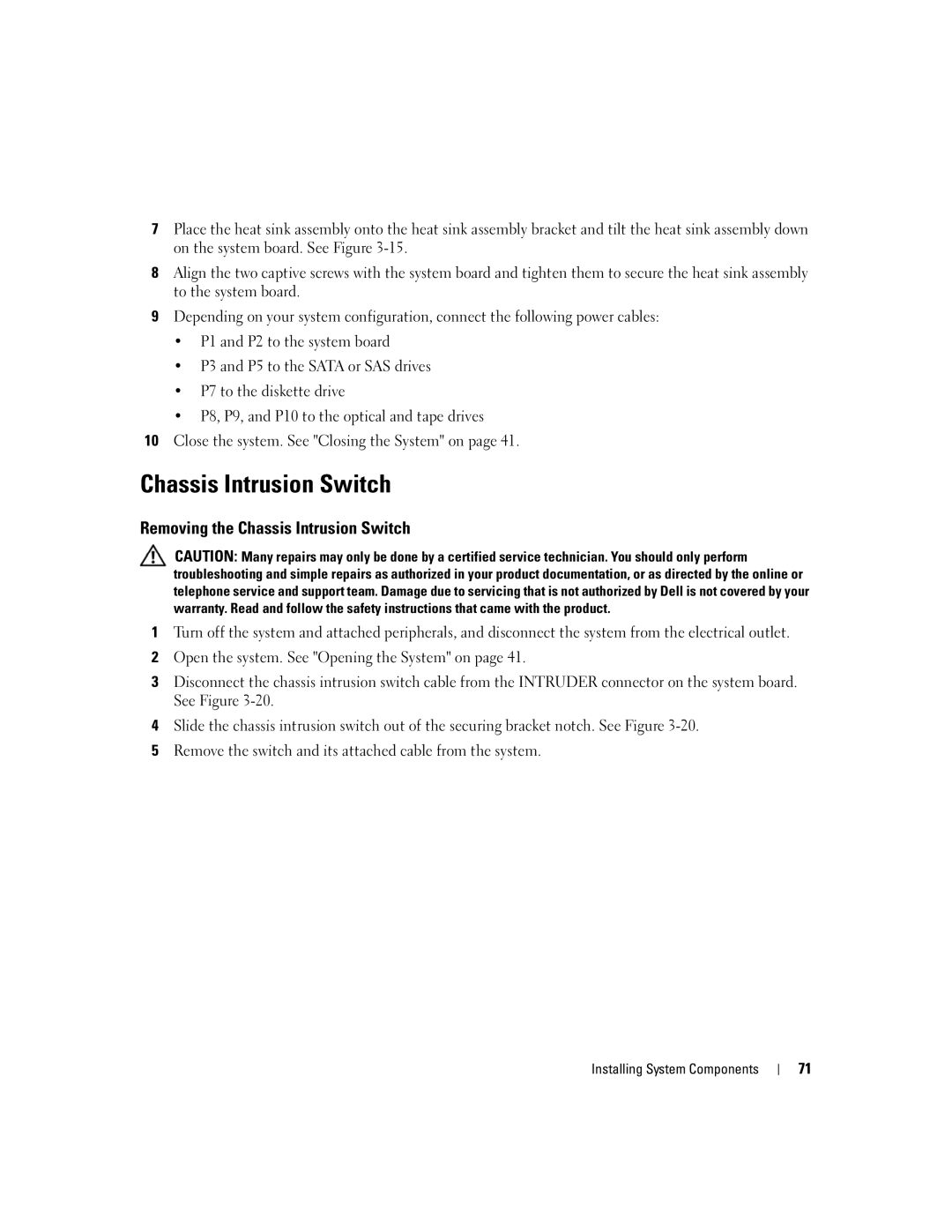
7Place the heat sink assembly onto the heat sink assembly bracket and tilt the heat sink assembly down on the system board. See Figure
8Align the two captive screws with the system board and tighten them to secure the heat sink assembly to the system board.
9Depending on your system configuration, connect the following power cables:
•P1 and P2 to the system board
•P3 and P5 to the SATA or SAS drives
•P7 to the diskette drive
•P8, P9, and P10 to the optical and tape drives
10Close the system. See "Closing the System" on page 41.
Chassis Intrusion Switch
Removing the Chassis Intrusion Switch
CAUTION: Many repairs may only be done by a certified service technician. You should only perform troubleshooting and simple repairs as authorized in your product documentation, or as directed by the online or telephone service and support team. Damage due to servicing that is not authorized by Dell is not covered by your warranty. Read and follow the safety instructions that came with the product.
1Turn off the system and attached peripherals, and disconnect the system from the electrical outlet.
2Open the system. See "Opening the System" on page 41.
3Disconnect the chassis intrusion switch cable from the INTRUDER connector on the system board. See Figure
4Slide the chassis intrusion switch out of the securing bracket notch. See Figure
5Remove the switch and its attached cable from the system.
Installing System Components
71
